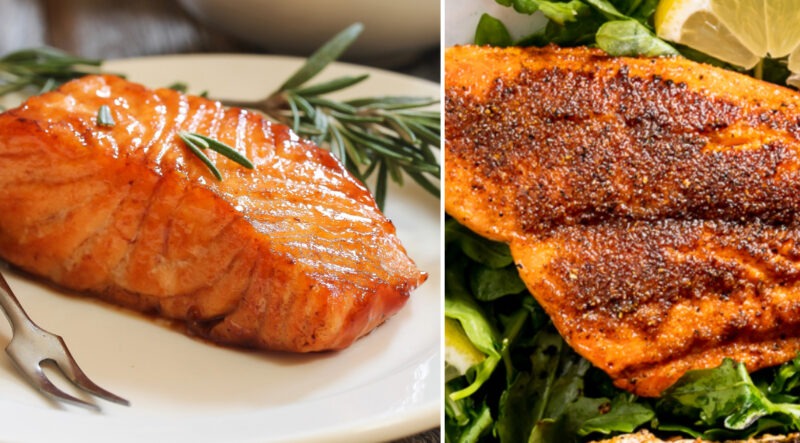Choosing farmed salmon at the grocery store
Making an eco-friendly food choice today is completely in our hands
Commentary
By Samantha Bacchus McLeod
When standing in front of the seafood section at our local grocery store, faced with the choice between farmed salmon and wild-caught, it becomes extremely challenging to know the difference between the two. Both types have their own unique qualities, so whether we love seafood, or we’re just looking to make a healthy choice, getting past the propaganda to understanding how to distinguish the difference between farmed salmon and wild salmon can help us make a more informed decision.
Price is one of the most noticeable differences between farmed salmon and wild-caught. Generally, farmed salmon tends to be less expensive than its wild counterpart. This price discrepancy is mainly due to the difference in production methods and availability. Farmed salmon is raised in controlled environments mostly close to home, making it more readily available and cost-effective, whereas wild salmon is caught in its natural habitat, which involves more effort and resources.
Appearance is another way to differentiate between farmed salmon and wild-caught salmon. Farmed salmon has a lighter orange hue compared to the deeper orange of wild-caught salmon. Additionally, farmed salmon tends to have a more uniform and plump appearance due to controlled feeding and growth conditions, whereas wild salmon may have a more irregular shape, with variations in size and thickness.
Labeling is of the utmost importance, when browsing the seafood section, be sure to check the packaging for specific labeling that indicates whether the salmon is farmed or wild-caught. Look for terms such as “farm-raised” or “wild-caught” to easily identify the source of the salmon. Many stores are required to provide this information to consumers, making it easier to make an informed choice.
Texture and flavour are also distinguishing factors between farmed salmon and wild-caught. Here individual preferences may vary as factors such as diet and handling can influence the taste and texture of the fish. Most people prefer the meatier, higher fat content of farmed salmon which adapts to all types of cuisines, while others prefer wild-caught salmon that has a leaner and more complex flavour profile on its own.
Sustainability is number one for environmentally conscious consumers like me. Sustainability is a crucial consideration when choosing seafood. Look for certification labels such as the Aquaculture Stewardship Council (ASC) for farmed salmon, or the Marine Stewardship Council (MSC) for wild-caught salmon. These certifications indicate that the salmon has been sourced from sustainable fisheries or responsibly managed aquaculture operations.
In conclusion, when I’m faced with the decision between farmed salmon and wild-caught at the grocery store, I consider factors such as price, appearance, labeling, texture and flavour, and sustainability to make an informed choice that aligns with my preferences and values. By paying attention to these factors, we can all enjoy delicious and nutritious salmon while supporting sustainable seafood practices.
I am very lucky to be living here in British Columbia where we are known far and wide for our access to both farmed and wild-caught seafood. When the mood strikes me for fresh fish, shopping for farmed-raised or wild-caught salmon at my local grocers is a breeze if I am prepared with the above information.

